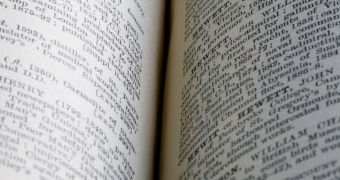According to investigators, it would appear that the phenomenon known as letter “crowding,” in which signs become less clear when they are surrounded by other, similar signs, is actually helping to improve vision. This is universally true for all people, says Dr Frans Cornelissen. He is the expert that managed to develop the first ever mathematical model to explain crowding, working alongside experts Dr Ronald van den Berg and professor Jos Roerdink, ScienceDaily reports.
“At this moment in time our model is mainly interesting in a fundamental sense. In the long term, however, it may acquire practical applications, for example when designing learning material for children with dyslexia,” explains Cornleissen. In the experimental setup he devised, the expert asks volunteers to look at a computer screen, where the letter E, a cross, and the digit 8 are displayed. The participants naturally report that they can make out each individual symbol without difficulty. But when more letters and numbers are added to the screen, everything suddenly seems to begin running into each other.
“And this despite the fact that nothing has changed in the E and the 8. The reason you can no longer recognize the E and the 8 is crowding. That limitation is locked into our brains and appears in everything we look at. You could call it a universal eye problem, because objects are nearly always surrounded by other objects,” the scientist says. Many researchers believed until now that crowding prevents us from seeing better, but the new investigation says that, on the contrary, this is what allows us to see with the level of detail we do.
“Our eyes are continually being bombarded with information, and our brains have to decide what is important. Simulations conducted with our model show that crowding appears to help make the important information much clearer. If you look at pictures without crowding, the illustration always stays a bit fuzzy. However, if you then apply crowding, the edges of letters and objects in an image become much sharper,” the expert concludes. Details of the investigation appear in the latest issue of the open-access scientific journal PLoS Computational Biology.

 14 DAY TRIAL //
14 DAY TRIAL //